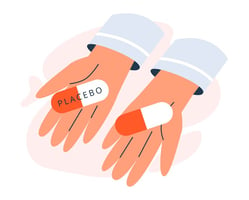Study Finds ‘Psychiatric Ambulance’ Provides Safe and Uncoercive Transport of Individuals in Crisis

Individuals having a mental health crisis who were transported to a hospital by a “psychiatric ambulance” required fewer restraints or other coercive measures compared with individuals transported by the police, according to a report in Psychiatric Services.
Though police are often responsible for transporting patients in crisis who may be agitated or aggressive, they “usually receive limited training in managing psychiatric disorders and in responding to individuals experiencing psychiatric symptoms or crises, which may increase the risk for preventable escalation and the use of restrictive measures,” wrote Jeroen Zoeteman, M.D., of the psychiatric emergency service in Amsterdam, and colleagues.
In 2014, Amsterdam introduced a psychiatric ambulance service as an alternative approach. The yellow-colored vehicle—operated by a trained driver and psychiatric nurse—was indistinguishable from the city’s typical ambulance, but the interior was stripped of visible medical equipment to create a tranquil environment. Individuals could be seated upright or lie on a stretcher, with soft Velcro fastening as a method of restraint if necessary. If needed, sedative medication could be administered.
Zoeteman and colleagues compared the use of restraints, incidents of aggression, and psychiatric hospitalization among 498 police transports in the four months prior to introduction of the ambulance and 655 psychiatric ambulance transports in the six months after introduction.
Among the individuals transported by ambulance, 86% had no restraints applied compared with 57% of those transported by police. The use of handcuffs was virtually absent among the ambulance group (less than 1%), while 42% of those transported by police were handcuffed. The occurrence of aggressive events was similarly low (2%) in both the ambulance and pre-ambulance groups.
The rates of hospital admission were similar between the two groups (36% vs. 33%), but significantly more admissions were voluntary in the ambulance group (39% vs. 27%).
The psychiatric ambulance is among several innovations—such as Crisis Intervention Teams (CIT) and the CAHOOTS (Crisis Assistance Helping Out On The Streets) program in Eugene, Ore.—designed to support police or relieve them of the burden of transporting agitated or possibly aggressive patients having a psychiatric emergency. The researchers noted that the CIT model in the U.S. has been successful at reducing the use of force or coercion, but CIT officers sometimes transport individuals to hospitals by police vehicle, which in many communities is accompanied by restraint with handcuffs.
“Thus, shifting to an ambulance system to transport persons in a mental health crisis could also improve care in communities in which the CIT model is active,” they wrote.
For more information see the Psychiatric News article “Street Crisis Teams in San Francisco Replace Police for 911 Psychiatric Calls.”
(Image: Getty Images/iStock/Jaap2)
Psychiatric News Seeks Contributions From Members
New Editor in Chief Adrian Preda, M.D., invites APA members to become involved in Psychiatric News by writing news or opinion articles on the topic of their choice or by applying for leadership positions to invite and curate articles from other members in new sections that include the areas of technology, sex and gender issues, advocacy, psychotherapy, integrated psychiatry and primary care, and consultation-liaison psychiatry. Interested? For more information, send an email to editor@psych.org.





